

Meghalaya, located in northeastern India, is a state of spectacular natural beauty and rich cultural heritage. Known as the "Abode of Clouds," it is famous for its high rainfall, lush green landscapes, and unique living root bridges. Home to the Khasi, Garo, and Jaintia tribes, Meghalaya offers a fascinating blend of ancient traditions, vibrant festivals, and stunning natural wonders. From the pristine waterfalls of Cherrapunji to the sacred forests of Mawphlang, the state presents a unique experience of nature and culture in perfect harmony.
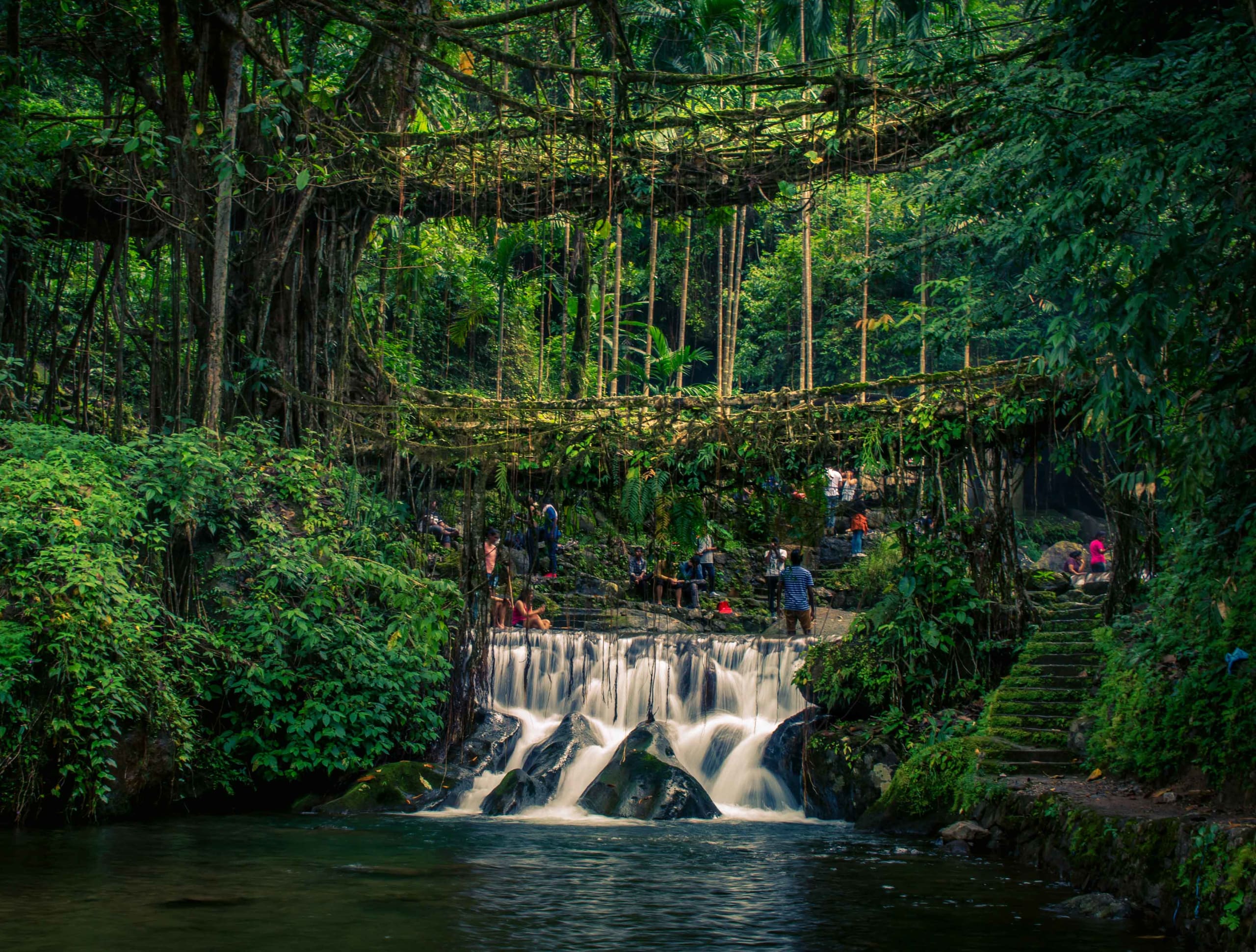
Meghalaya, meaning "Abode of Clouds" in Sanskrit, is one of India's most geographically and culturally unique states. Carved out of the former state of Assam in 1972, Meghalaya has a rich history of independent tribal kingdoms that maintained their distinct identities while interacting with neighboring cultures. The state's three main tribal groups - the Khasis, Garos, and Jaintias - each have their own rich traditions, languages, and social structures that have evolved over centuries.
The Khasi Hills were historically ruled by independent chiefs known as Syiems, who governed through democratic councils called Durbar. The Jaintia Hills were once the Jaintia Kingdom, with its capital at Jaintiapur, which had significant influence in the region. The Garo Hills were traditionally governed by village councils headed by a chief called Nokma. These traditional systems of governance continue to influence the social and political life of Meghalaya even today.
British colonial influence came relatively late to the region, with the Khasi Hills coming under British protection in the early 19th century through treaties with various Syiems. The British established the hill station of Shillong, which later became the capital of Assam and eventually Meghalaya. The colonial period saw the introduction of Western education and Christianity, which significantly influenced the region's cultural development.
Post-independence, the tribal areas of Meghalaya were initially part of Assam. Growing demands for a separate state led to the creation of Meghalaya as an autonomous state within Assam in 1970, and it became a full-fledged state of the Indian Union on January 21, 1972. This made Meghalaya one of the few states in India created to protect and promote the distinct cultural identities of its tribal populations.
Meghalaya's geographical isolation has helped preserve its unique biodiversity and cultural traditions. The state receives some of the highest rainfall in the world, creating lush green landscapes and numerous rivers and waterfalls. This natural abundance has shaped the lifestyle, economy, and cultural practices of its people, who have developed sustainable ways of living in harmony with their environment.
Today, Meghalaya takes pride in its matrilineal society, where lineage and inheritance are traced through women - a rare social system in India. The state is also renowned for its living root bridges, a unique example of bio-engineering where rubber tree roots are trained to form sturdy bridges across streams. These remarkable structures, some over 500 years old, symbolize the harmonious relationship between the people of Meghalaya and their natural environment.
Meghalaya's cultural heritage, combined with its stunning natural beauty and unique social systems, makes it one of India's most fascinating states. From the sacred groves preserved by traditional beliefs to the vibrant festivals celebrating agricultural cycles, Meghalaya represents a perfect blend of ancient traditions and modern aspirations.
Meghalaya is known for its rich cultural heritage, which is reflected in its linguistic diversity. The state's language landscape showcases its unique history as home to distinct tribal communities with their own languages and cultural traditions.
English is the official language of Meghalaya and is widely used in administration, education, and business. It serves as a link language between the different tribal communities and with the rest of India.
The languages of Meghalaya reflect its unique position as a meeting point of different language families - Austroasiatic (Khasi), Tibeto-Burman (Garo), and Indo-European (English, Hindi). While English serves as the administrative link, the tribal languages remain the heart of cultural identity for their respective communities. This linguistic diversity, combined with high literacy rates, makes Meghalaya a fascinating example of multilingualism in India's northeastern region.
Meghalaya's festivals reflect its agricultural roots, deep connection with nature, and vibrant tribal cultures. From harvest celebrations that mark the agricultural cycle to religious festivals that showcase the state's spiritual diversity, Meghalayan festivals are colorful, joyful, and deeply meaningful expressions of community life.
Wangala, also known as the Hundred Drums Festival, is the most important post-harvest festival of the Garo community. This vibrant celebration marks the end of the agricultural year and thanks the sun god Misi Saljong for blessing the crops. The festival is characterized by rhythmic drumming, traditional dances, and colorful costumes.
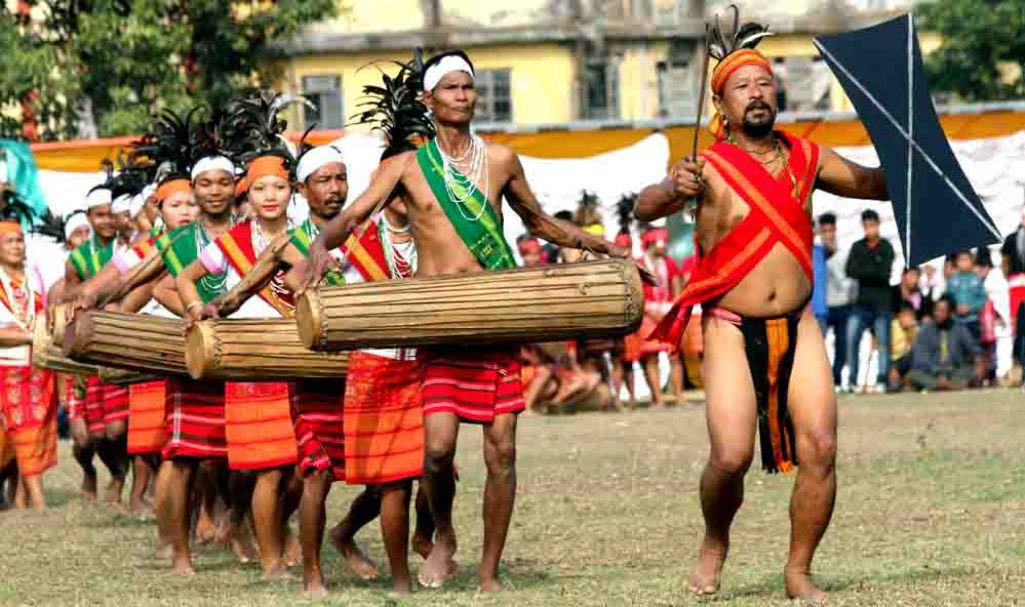
The Wangala Festival is more than just a celebration; it is the heartbeat of Garo culture that connects people to their agricultural roots and animist heritage. With its powerful drumming, vibrant dances, and community spirit, Wangala perfectly embodies Meghalaya's spirit - joyful, inclusive, and deeply connected to the rhythms of nature.
The Nongkrem Dance Festival is one of the most important religious events for the Khasi community, held annually at Smit near Shillong. This five-day festival is a thanksgiving ceremony to the goddess Ka Blei Synshar for a rich harvest and prosperity. The festival is famous for its traditional dances performed by young men and women in splendid traditional attire.
The Nongkrem Dance is performed at the palace of the Syiem (chief) of Khyrim, who is the religious head of the Khasi people. The festival includes animal sacrifices, traditional rituals, and prayers for the well-being of the community. The most visually striking aspect is the Pomblang ceremony, where goats are sacrificed to appease the deity.
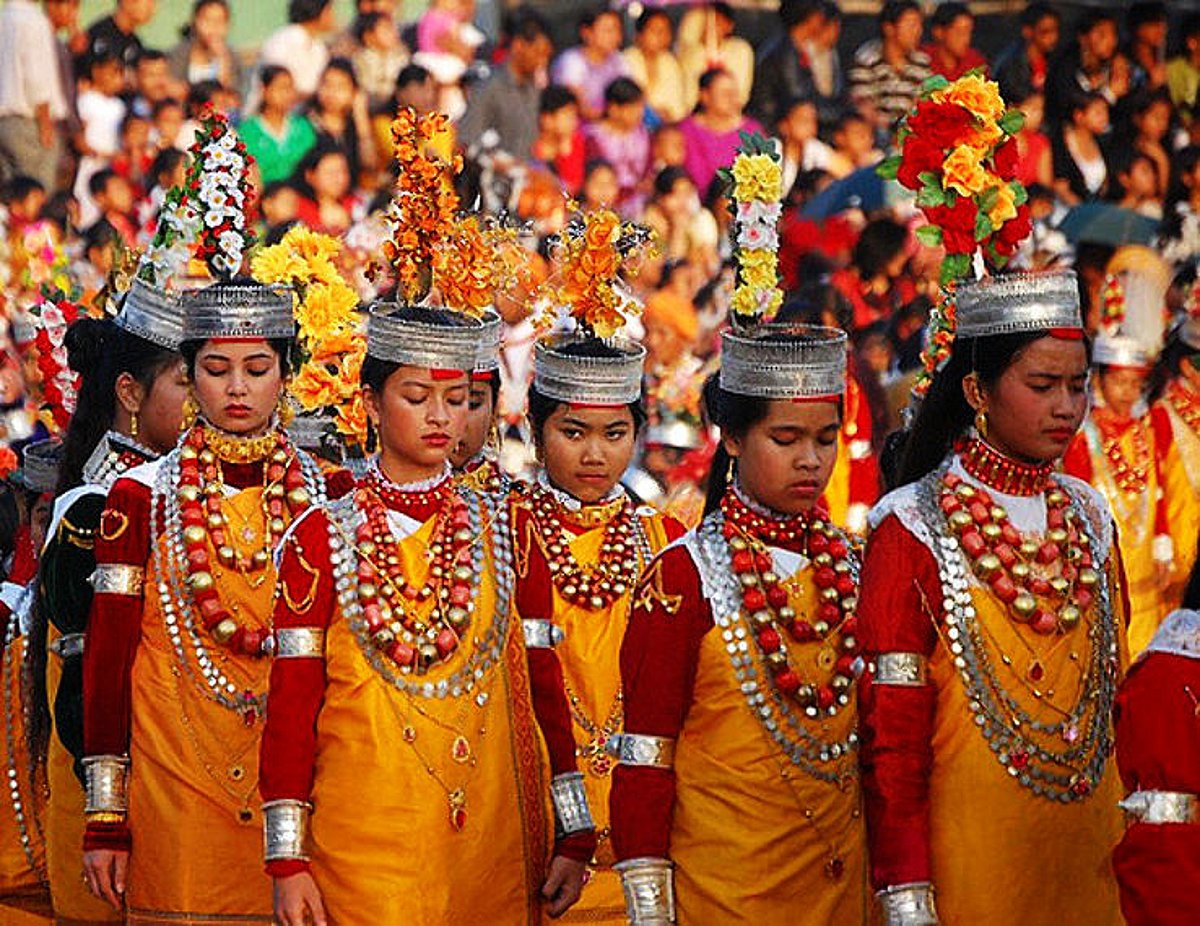
The Nongkrem Dance Festival is a testament to Meghalaya's deep-rooted indigenous religious traditions and its significance as a center of Khasi culture. The devotion and cultural pride displayed during this festival reflect the enduring traditions of the Khasi people and their connection to their ancestral heritage.
Behdeinkhlam is the most important festival of the Jaintia (Pnar) community, celebrated to drive away plague and diseases and to pray for a good harvest. The festival, whose name means "to drive away evil spirits," is marked by vibrant processions, traditional sports, and religious rituals that showcase the unique cultural identity of the Jaintia people.
Behdeinkhlam represents the rich cultural heritage of the Jaintia people, showcasing their unique traditions and spiritual beliefs. As a festival that combines religious solemnity with community celebration, it provides a fascinating insight into the cultural diversity of Meghalaya beyond its more widely known Khasi and Garo traditions.
The festivals of Meghalaya showcase its incredible cultural diversity, where indigenous tribal traditions, Christian celebrations, and contemporary cultural events coexist and often influence each other. This harmonious blend of celebrations reflects the spirit of Meghalaya - joyful, inclusive, and deeply rooted in both nature and diverse cultural heritage. From the ancient drumbeats of Wangala to the solemn rituals of Nongkrem, and the joyful celebrations of Christmas, Meghalaya's festivals offer a rich tapestry of cultural expressions that celebrate the state's unique identity.

Meghalaya, known as the "Abode of Clouds," is a state of breathtaking natural beauty and rich cultural heritage. Each city in Meghalaya has its own distinct character, contributing to the state's reputation as one of India's most scenic destinations. From the vibrant capital of Shillong to the picturesque town of Cherrapunji, Meghalaya's urban centers offer a fascinating blend of colonial heritage, tribal culture, and stunning natural surroundings.
Shillong, the capital city of Meghalaya, is often called the "Scotland of the East" due to its rolling hills, picturesque landscapes, and colonial-era architecture. Nestled in the East Khasi Hills, Shillong serves as the cultural, educational, and commercial hub of Meghalaya. The city's pleasant climate, vibrant music scene, and blend of traditional and modern influences make it one of India's most charming hill stations.


Ward's Lake is one of Shillong's most iconic landmarks, located in the heart of the city. Built in the 1890s during British rule, this picturesque lake is surrounded by beautifully maintained gardens and offers boating facilities. The lake features a distinctive wooden bridge that crosses over it, providing perfect photo opportunities. The surrounding park is a popular spot for leisurely walks, picnics, and enjoying the pleasant Shillong weather.
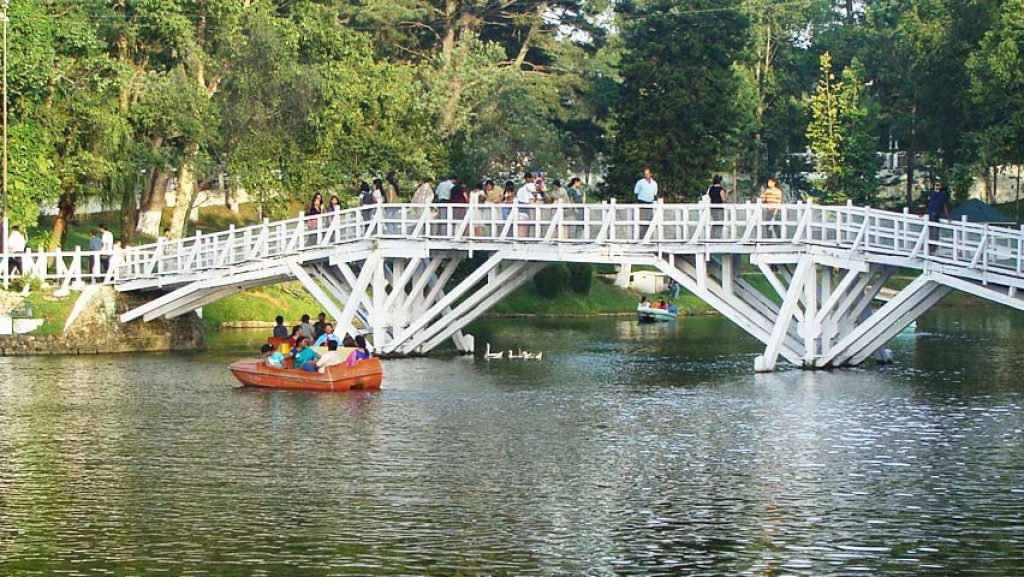
The lake was named after Sir William Ward, the then Chief Commissioner of Assam. Today, it remains a favorite destination for both tourists and locals, offering a peaceful escape from the city's hustle. The well-maintained flower beds, the charming bridge, and the tranquil waters create a serene atmosphere that embodies Shillong's nickname as the "Scotland of the East."
In conclusion, Ward's Lake is more than just a recreational spot; it's a living piece of Shillong's colonial history and a symbol of the city's natural beauty. Its central location and peaceful ambiance make it a must-visit destination for anyone exploring Meghalaya's capital.

Shillong Peak, standing at 1,965 meters above sea level, is the highest point in Meghalaya and offers breathtaking panoramic views of the city and surrounding hills. Located about 10 kilometers from the city center, the peak is considered sacred by the local Khasi people, who believe it to be the dwelling place of the deity 'Le Blah'. On clear days, visitors can see the Himalayan range from the viewing area at the top.
The peak is managed by the Indian Air Force, which has a radar station there. Visitors need special permission to access certain areas, but the main viewing point is open to the public. The journey to the peak takes you through beautiful pine forests and offers glimpses of Shillong's spectacular natural surroundings. The viewpoint provides an unparalleled perspective of the city layout, the Umiam Lake in the distance, and the rolling hills that characterize the region.
In conclusion, Shillong Peak offers not just spectacular views but also a connection to the spiritual beliefs of the Khasi people. It represents both the natural grandeur of Meghalaya and the cultural significance that mountains hold in the lives of its people.

The Don Bosco Museum of Indigenous Cultures is one of Asia's finest ethnographic museums, offering comprehensive insights into the diverse cultures of Northeast India. Spread across seven floors, the museum features extensive collections related to the tribal communities of all eight northeastern states. Each floor is dedicated to different aspects of tribal life, including anthropology, culture, religion, music, and handicrafts.
The museum's most striking feature is its sky walk on the top floor, which offers a 360-degree panoramic view of Shillong. The exhibits include traditional houses, ceremonial objects, musical instruments, weapons, and textiles from various tribes. Particularly notable are the sections on Khasi, Garo, and Jaintia cultures, which provide deep insights into Meghalaya's indigenous heritage. The museum also features a research center and library for scholars studying Northeast Indian cultures.
In conclusion, the Don Bosco Museum is not just a tourist attraction but an important institution for preserving and promoting the cultural heritage of Northeast India. It offers visitors a comprehensive understanding of the region's diverse tribal communities and their way of life.
Police Bazaar is the main commercial and shopping district in Shillong, located in the heart of the city. This bustling area is always alive with activity, offering everything from traditional Khasi handicrafts to modern consumer goods. The bazaar gets its name from the nearby police headquarters and has been the commercial center of Shillong since colonial times.
The market area is a maze of shops, stalls, and eateries offering a wide variety of products. Visitors can find traditional Meghalayan crafts like bamboo products, wooden carvings, and handwoven textiles alongside modern clothing, electronics, and household goods. The food scene in Police Bazaar is particularly vibrant, with numerous restaurants serving local Khasi cuisine as well as Chinese, Tibetan, and continental dishes. The area is also known for its bakeries, which reflect Shillong's British legacy.
Beyond shopping, Police Bazaar offers a cultural experience with its mix of traditional and modern elements. The area is particularly lively in the evenings when locals and tourists gather to shop, eat, and socialize. The blend of Khasi, Nepali, Bengali, and other communities going about their daily business creates a microcosm of Shillong's multicultural character.
In conclusion, Police Bazaar is more than just a market; it's the pulsating heart of Shillong where commerce, culture, and community intersect. Its vibrant energy and diverse offerings make it an essential destination for experiencing the city's dynamic spirit.
Shillong embodies the essence of Meghalaya with its blend of natural beauty, colonial heritage, and vibrant Khasi culture. As the state capital, it offers cultural richness, historical significance, and modern amenities while maintaining connections to traditional ways of life. From its picturesque lakes to its bustling markets, Shillong is a city that captures the enchanting spirit of the Meghalayan hills.
Cherrapunji, now officially known as Sohra, holds the record for the highest recorded rainfall in a single year and is one of the wettest places on Earth. Located in the East Khasi Hills, this picturesque town is famous for its stunning waterfalls, living root bridges, and dramatic landscapes. Despite its reputation for constant rain, Cherrapunji offers some of Meghalaya's most breathtaking natural attractions.
Cherrapunji represents the dramatic natural forces that shape Meghalaya, balancing its challenging climate with breathtaking beauty. As one of the rainiest places on earth, it showcases nature's power while offering unique attractions like living root bridges that demonstrate human ingenuity in harmony with nature. For visitors seeking to understand Meghalaya's natural wonders, Cherrapunji provides an unforgettable experience of the state's extreme yet beautiful environment.
Tura is the second-largest city in Meghalaya and the main urban center of the Garo Hills region. Located at the foothills of the Tura Peak, this scenic town serves as the cultural and administrative hub for the Garo community. Tura offers a different perspective on Meghalaya, showcasing the distinct culture and traditions of the Garo people amidst beautiful natural surroundings.
Tura offers a different dimension of Meghalaya, focused on the unique culture and traditions of the Garo community. As the gateway to the Garo Hills, it provides access to some of Meghalaya's most biodiverse areas while showcasing a cultural identity distinct from the Khasi-dominated eastern part of the state. For those seeking to understand the complete cultural mosaic of Meghalaya, Tura provides an essential perspective on the state's diversity.
Jowai is the administrative headquarters of the West Jaintia Hills district and the main urban center of the Jaintia community. Located on a plateau surrounded by the Myntdu River, this scenic town offers insights into the unique culture and traditions of the Jaintia (Pnar) people. Jowai is known for its beautiful landscapes, traditional festivals, and as a center of Jaintia culture.
Jowai represents the third major cultural stream in Meghalaya's diverse tapestry, showcasing the unique traditions of the Jaintia people. As the main town of the Jaintia Hills, it offers access to fascinating cultural sites and beautiful natural attractions while providing insights into a community with its own distinct language, traditions, and history. For those seeking to understand the complete cultural diversity of Meghalaya, Jowai provides an essential perspective on the state's tri-ethnic character.
Baghmara is the administrative headquarters of the South Garo Hills district and an important town in southern Meghalaya. Located near the Bangladesh border, this town serves as a gateway to the southern part of the state and offers access to some of Meghalaya's most pristine natural areas. Baghmara provides insights into the Garo culture while showcasing the state's rich biodiversity.
Baghmara offers a different perspective on Meghalaya, focused on the state's rich biodiversity and traditional Garo culture in a relatively remote setting. As the southern gateway to Meghalaya, it provides access to pristine natural areas and offers insights into Garo traditions that have been less influenced by urbanization. For those seeking to explore Meghalaya beyond its well-known destinations, Baghmara provides a fascinating glimpse into the state's natural and cultural diversity.
The cities of Meghalaya each contribute uniquely to the state's character. Shillong represents the vibrant urban center with its blend of colonial heritage and modern culture, Cherrapunji showcases the state's dramatic natural forces, Tura highlights the distinct Garo cultural identity, Jowai represents the Jaintia tradition, and Baghmara offers access to Meghalaya's pristine southern wilderness. Together, these urban centers showcase the diversity that makes Meghalaya much more than just a scenic destination—they reveal a state with rich cultural diversity, dramatic natural beauty, and unique social systems. From the living root bridges of Cherrapunji to the musical culture of Shillong, from the Wangala celebrations in Tura to the Behdeinkhlam festival in Jowai, Meghalaya's cities offer experiences that capture the essence of this unique Indian state.
Meghalayan food is characterized by its simple yet flavorful preparations, minimal use of spices, and emphasis on fresh, local ingredients. The cuisine reflects the state's agricultural abundance, forest resources, and tribal cultural diversity, creating a unique culinary tradition that is both healthy and deeply satisfying. From fermented soybean preparations to bamboo shoot delicacies, Meghalayan cuisine offers a distinctive taste of the Northeast.
Jadoh is the quintessential Khasi dish, a flavorful rice preparation that is a staple in most households and a must-have during festivals and celebrations. This aromatic dish showcases the Khasi preference for simple yet satisfying flavors and the use of local ingredients like pork and indigenous spices.
Jadoh is more than just a meal; it's a symbol of Khasi identity and community life. Its simplicity belies the complex cultural significance it holds in Khasi society, making it the heart of Meghalayan culinary tradition and a must-try for anyone seeking to understand the state's food culture.
Dohneiiong is a rich and flavorful pork curry that exemplifies the unique flavor profile of Khasi cuisine. This distinctive dish features pork cooked with black sesame seeds, creating a nutty, aromatic curry that is unlike any other pork preparation in India. Dohneiiong showcases the Khasi TAILnt for creating complex flavors from simple, locally available ingredients.
Dohneiiong is more than just a pork curry; it's a culinary masterpiece that showcases the unique flavor profile of Meghalayan cuisine. The combination of pork with black sesame creates a dish that is both familiar and exotic, representing the perfect harmony between local ingredients and traditional cooking techniques that characterizes Khasi food culture.
Tungrymbai is a traditional Khasi dish made from fermented soybeans, known for its strong aroma and distinctive flavor. This unique preparation showcases the Khasi tradition of fermentation, which preserves food and enhances its nutritional value. Despite its strong smell, Tungrymbai is considered a delicacy and is valued for its health benefits and complex flavor profile.
Tungrymbai is more than just a fermented food; it's a living tradition that connects the Khasi people to their ancestral knowledge of food preservation. While its strong aroma may be challenging for the uninitiated, its complex flavor and health benefits make it a valued part of Khasi culinary heritage and a fascinating example of Meghalaya's unique food culture.

A spicy dried fish soup that is a Khasi delicacy.

Steamed rice powder preparation, often served with meat curries.
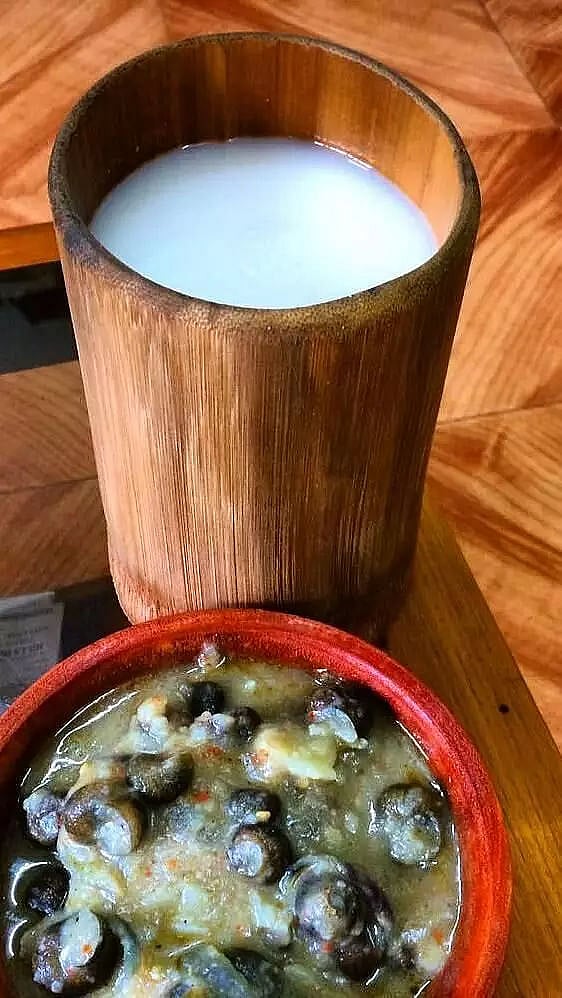
Traditional rice beer brewed by various communities in Meghalaya.

Tibetan-style dumplings, popular throughout Meghalaya.
Meghalayan cuisine is a vibrant reflection of the state's natural bounty and cultural diversity. From the festive flavors of Jadoh to the unique taste of Tungrymbai, and the rich goodness of Dohneiiong, Meghalayan food tells the story of a people deeply connected to their land and forests. The cuisine's emphasis on local ingredients, minimal spicing, and traditional cooking methods creates a unique culinary identity that is both healthy and deeply satisfying. Each dish is not just nourishment but a celebration of Meghalaya's rich agricultural heritage and its position as a cultural crossroads in Northeast India.
Meghalayan fashion is a beautiful reflection of the state's diverse tribal communities, misty climate, and rich cultural heritage. From the elegant traditional attire worn during festivals to the practical everyday clothing suited for the hilly terrain and rainfall, Meghalayan fashion represents a unique blend of functionality, aesthetics, and cultural identity. The distinct clothing styles of the Khasi, Garo, and Jaintia communities showcase the state's ethnic diversity while maintaining a cohesive regional identity.
Did you know? Meghalaya is famous for its traditional weaving techniques, particularly the intricate designs on the Khasi 'Jainsem' and the Garo 'Dakmanda', each with unique patterns and cultural significance.
Traditional Meghalayan men's attire reflects the state's diverse tribal communities and practical considerations for the hilly terrain and climate. From formal occasions to everyday wear, these garments showcase unique cultural identities that have evolved over centuries while adapting to modern influences.
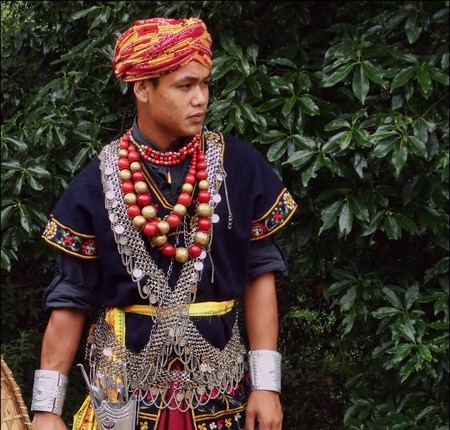
Traditional Meghalayan men's fashion represents the state's diverse cultural heritage, with distinct styles for each major community. The practicality of the clothing reflects the needs of Meghalaya's challenging terrain and climate, while the decorative elements showcase the artistic traditions of each community. The adaptation of traditional elements to modern clothing demonstrates the dynamic nature of Meghalayan cultural identity.
Meghalayan women's traditional attire is renowned for its elegance, intricate designs, and the distinctive styles of each major community. The most visually striking are the traditional dresses of the Khasi and Garo women, which have become symbols of Meghalayan cultural identity. These outfits showcase the skill of local weavers and the aesthetic sensibilities of each community.



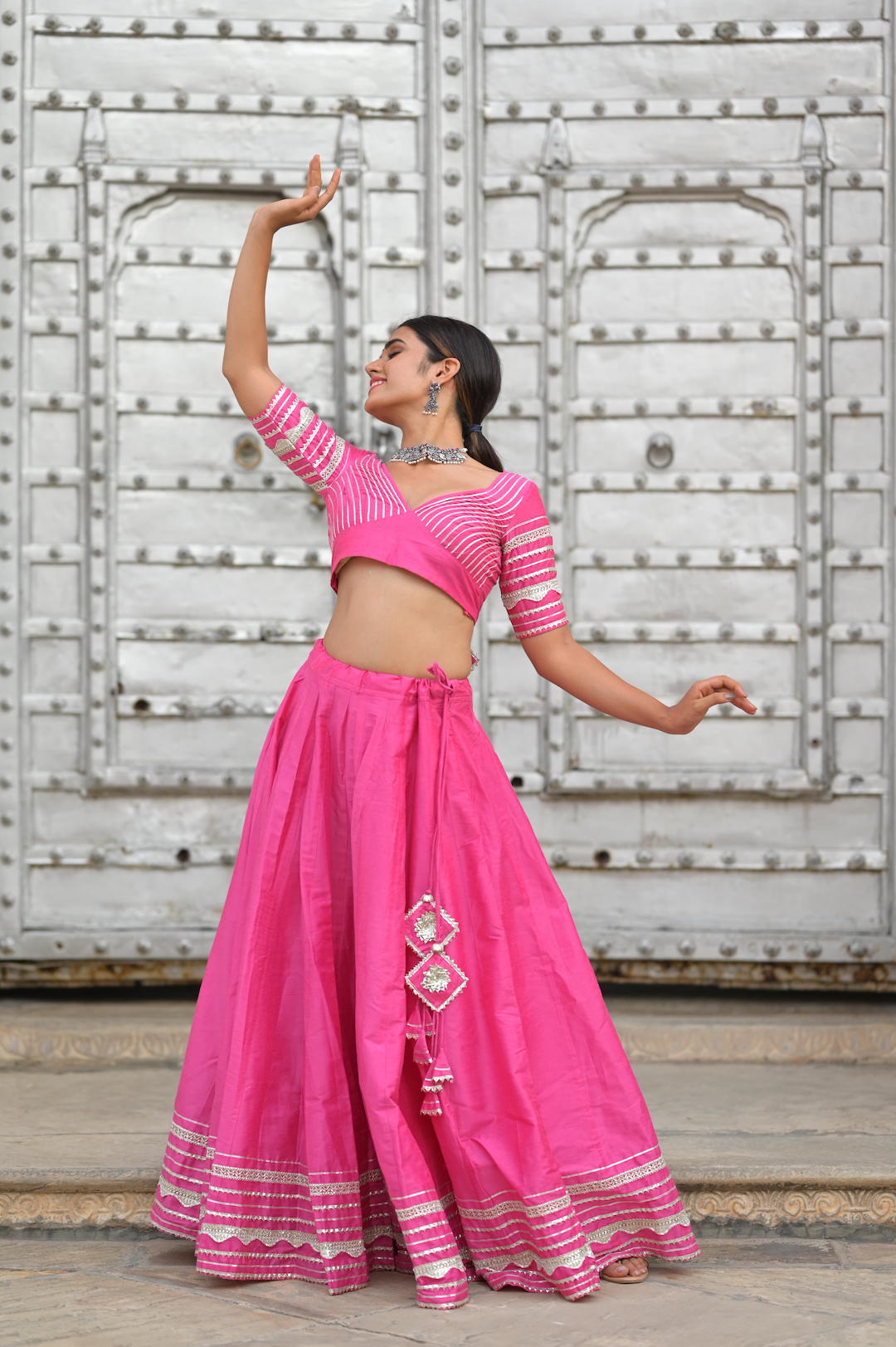
Women's fashion in Meghalaya tells a story of cultural diversity and identity preservation. The distinct styles of the Jainsem, Dakmanda, and Jaintia attire represent the three major communities while creating a cohesive Meghalayan identity. The intricate weaving patterns often carry symbolic meanings related to nature, mythology, and social status. The continued wearing of traditional attire, especially during festivals and ceremonies, demonstrates the pride that Meghalayans take in their cultural heritage and the importance of women as bearers and transmitters of this heritage.
Meghalaya is renowned for its traditional weaving techniques, particularly the intricate designs created by Khasi and Garo weavers. These textiles represent centuries-old traditions and continue to be an important part of Meghalayan cultural and economic life, with each community having its distinct styles and patterns.
The textile traditions of Meghalaya have ancient roots, with weaving being an essential skill for women in all three major communities. During the colonial period, new materials and designs were introduced, though traditional weaving continued. In the post-independence era, there has been a revival of traditional techniques alongside innovations that combine traditional motifs with contemporary designs. Government initiatives and cooperatives have helped promote Meghalayan textiles and support local weavers.
Contemporary Meghalayan fashion represents a dynamic blend of traditional elements with global influences, shaped by education, urbanization, and increased connectivity. Modern Meghalayan designers are creating innovative styles that honor tradition while embracing contemporary aesthetics, particularly in the state's fashion-conscious capital, Shillong.
Distinct traditional attire for Khasi, Garo, and Jaintia communities, with clothing made from locally produced textiles using natural dyes.
Introduction of new materials and influences, while traditional attire remained dominant in rural areas. Shillong emerged as a fashion center.
Traditional attire maintained for cultural events while Western clothing became common for everyday wear. Beginning of fusion fashion experiments.
Renewed interest in traditional textiles and emergence of Meghalayan designers blending tradition with modernity.
Globalization and digital connectivity accelerate fashion evolution, with Meghalayan fashion gaining recognition and traditional textiles being promoted through government initiatives.
Meghalaya has seen the emergence of fashion designers and initiatives that promote traditional textiles and contemporary designs incorporating Meghalayan elements.
Meghalayan fashion is a dynamic and evolving expression of the state's unique cultural identity. Rooted in practical considerations for the climate and terrain and shaped by centuries of cultural diversity, it represents a harmonious blend of tradition and innovation. From the elegant Jainsem to the vibrant Dakmanda, and contemporary fusion wear, Meghalayan clothing tells a story of cultural preservation, adaptation, and pride in heritage.
As Meghalaya continues to navigate the intersection of tradition and modernity, its fashion scene remains a vibrant reflection of this balance. The growing recognition of Meghalayan textiles and designs suggests an exciting future where traditional elements will continue to influence fashion while adapting to contemporary sensibilities. The state's unique position as a cultural crossroads in Northeast India ensures that its fashion will continue to evolve in distinctive and fascinating ways.
Future Trends: The next decade will likely see increased emphasis on sustainable practices in textile production, technological integration in weaving, further innovation in fusion wear, and greater national and international recognition of Meghalaya's unique fashion identity.